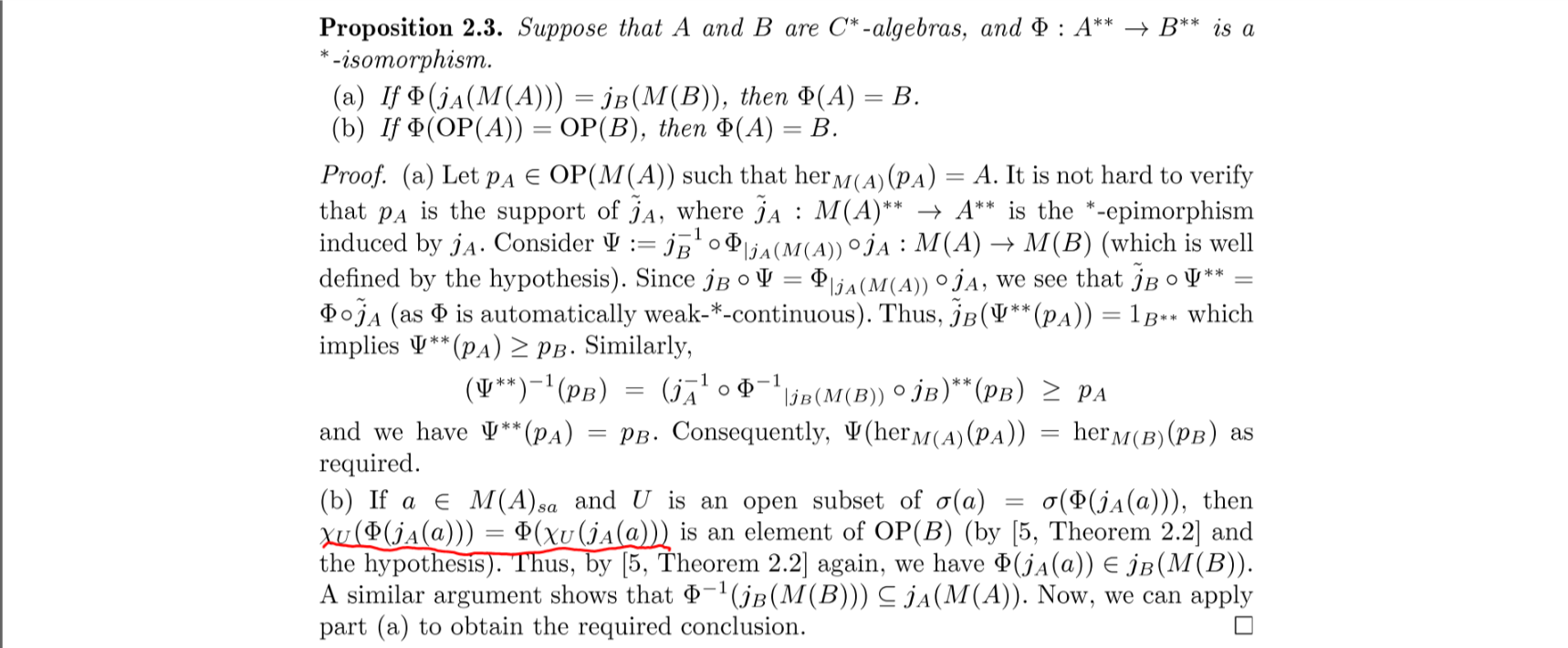I am confused with the underlined equation in the following picture.
 I know that a *-isomorphism communicates with continuous functional calculus since every continuous functions on the compact subset of $\mathbb{R}$ can be approximated uniformly by polynomials.
I know that a *-isomorphism communicates with continuous functional calculus since every continuous functions on the compact subset of $\mathbb{R}$ can be approximated uniformly by polynomials.
To prove the underlined equation, we have to prove that $f\to \Phi(f(j_A(a)))$ is the Borel functional calculus on $\Phi(j_A(a))$. Given a net $(f_\lambda)$ of continuous functions converging to $0$ respect to $\sigma(A^{**},A^*)$ topology , we have $f_\lambda(j_A(a))\xrightarrow{\sigma(A^{**},A^*)}0$, but how to obtain $\Phi(f_\lambda(j_A(a)))\xrightarrow{\sigma(B^{**},B^*)}0$?
Notes: 1.The whole article is here;
2. My interest is the unital case, you can simply take $M(A)=A$;
3. $j_A$ in the picture is the canonical injection from $A$ to $A^{**}$.
